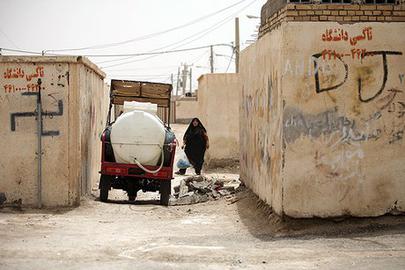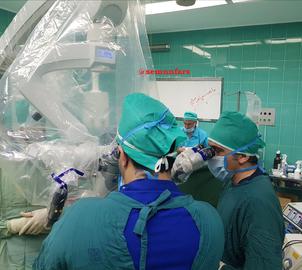What is the magnitude of poverty in Iran? It’s an important question, but until now there have been no reliable and comprehensive statistics to allow for adequately objective answers beyond conjecture and anecdotes. But in early December 2018, the Iranian parliament’s Research Center published a pioneering and comprehensive report on absolute poverty in the 31 provinces of Iran [Persian link] for the Iranian calendar year of 1395 (March 20, 2016 to March 20, 2017).
Objective answers for the rate of poverty, however, need measurable criteria. What is poverty or, to be more exact, “absolute” or “extreme” poverty?
A report published by the United Nations in 1995 defines absolute poverty as “a condition characterized by severe deprivation of basic human needs, including food, safe drinking water, sanitation facilities, health, shelter, education and information. It depends not only on income but also on access to social services.”
The World Bank has established a more quantitative standard. It sets the poverty line at a daily income of US$1.9 at 2010 prices. This translates to more than US$2 in 2016 prices, or more than US$600 per month.
In 2016, US$1 was worth 3,500 Iranian tomans, so the poverty line in Iran stood at around 2.1 million tomans per month. This number varied in different localities after being adjusted for purchasing power.
For information about the concepts, methods, and statistical data IranWire used to arrive at a general picture of poverty in Iran at a national level, read the introduction to the series.
In this report, we explore poverty in the northwestern province of West Azerbaijan in the northwest of Iran.
One-fifth of the population faces starvation/Source: Statistical Center of Iran
West Azerbaijan borders Turkey, Iraq and the Republic of Azerbaijan and for hundreds of years has been Iran’s land bridge to modern Europe. With its geopolitical vantage point, it geography and its climate, West Azerbaijan could have been one of the richest provinces in Iran but political and social upheavals have turned it into a land that suffers from a range of crises, from environmental and ethnic to, of course, spreading poverty and margin dwelling. According to the parliament’s Research Center, one of five people in the province live under the poverty line.
Of around 936,000 households in West Azerbaijan, close to 175,000 households, or a population of 643,000, live under the absolute poverty line, meaning that they cannot afford sufficient food, or 2,100 calories per day. Although the participation rate — the sum of all employed workers divided by the working age population — is high in the province, according to employment figures for 2017, the rate of unemployment is 2.3 percent higher than the national average and this in itself makes poverty in the province more deep-rooted [Persian PDF].
West Azerbaijan (Source: Google Maps)
Urban Poverty
More than 85 percent of West Azerbaijan’s poor live in urban areas. According to the parliament’s Research Center, more than 547,000 of the province’s urban population, or over one in four people, live under the absolute poverty line.
In 2016, West Azerbaijan’s urban poverty line was 410,000 tomans (US$98) for one person and 1.1 million tomans ($261) for a family of four. An adjustment of these numbers for the latest inflation statistics for West Azerbaijan published by the Statistical Center of Iran [Persian PDF] means that in November 2018 the absolute urban poverty line stood at over 600,000 tomans ($142) for one person and above 1.6 million tomans ($379) for a household of four. This number is important because it is approximately 500,000 tomans ($120) higher than the minimum wage in 2018.
Rural Poverty
Rural poverty in West Azerbaijan might be lower than in urban areas but the income of villagers in this province is far from impressive. Even though in 2016 the per capita rural poverty line for West Azerbaijan was set at a mere 219,000 tomans ($53), 26,000 households with a population of 96,000 — about nine percent of the rural population — live under the poverty line.
In 2016 the rural poverty line for a family of four was 492,000 tomans ($117). If we take inflation into account, we arrive at the conclusion that in November 2018 the poverty line had climbed to over 919,000 tomans ($219) per month.
Read the full Poverty in Iran series:
Poverty in Iran: An Introduction
Poverty in Iran: West Azerbaijan
Poverty in Iran: Sistan and Baluchistan
Related Coverage:
Can Iran Survive Record Inflation?, February 25, 2019
Inflation Hits Iran’s Most Vulnerable as Crisis Continues, January 27, 2019
Iran’s Unemployment Crisis: Only 11 Million Full-time Jobs, January 23, 2019
Revealed: Absolute Poverty in Iran, December 7, 2018
Could a 20% Salary Increase Help State Employees?, December 5, 2018
Iran Rushing Toward 30 Percent Inflation, November 27, 2018
, October 30, 2018
Runaway Inflation and the Nationwide Trucker Strike, October 4, 2018
Families and Fishermen Lose Out as Prices Rise, October 1, 2018
visit the accountability section
In this section of Iran Wire, you can contact the officials and launch your campaign for various problems

























comments